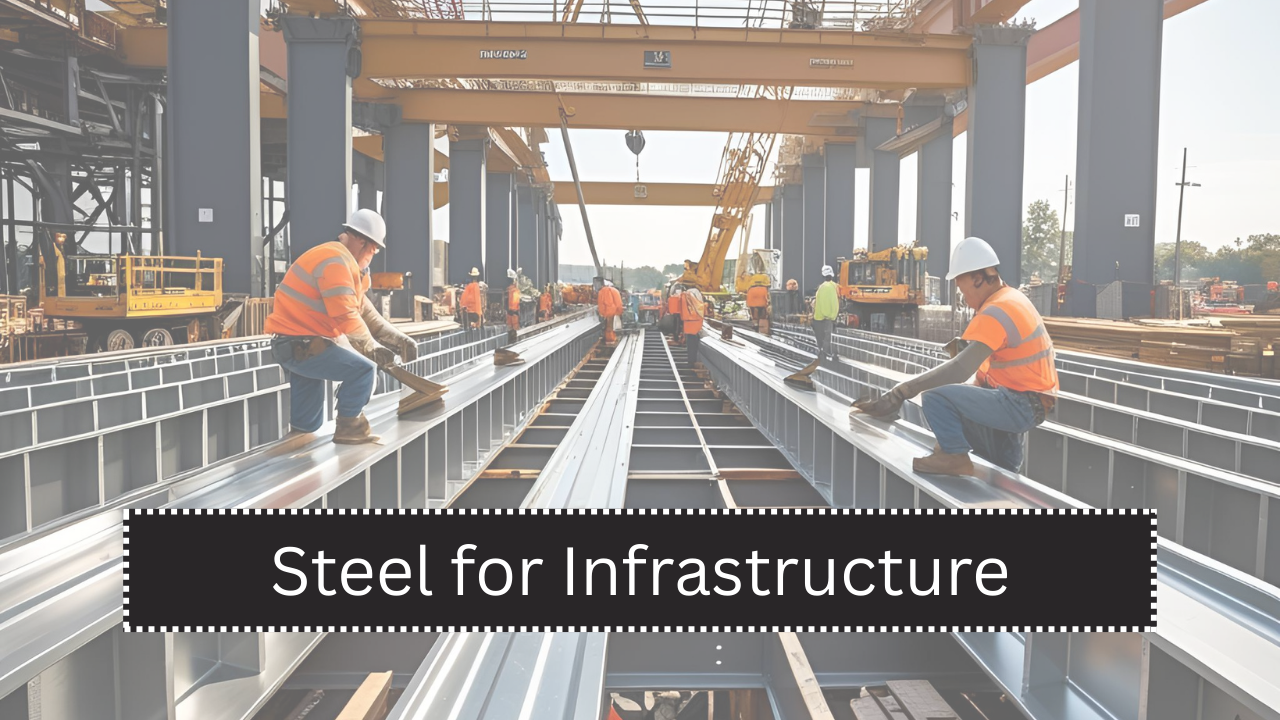Modern infrastructure is evolving rapidly with the help of smart technologies. One key innovation is the use of smart steel—a type of steel enhanced with sensors and digital tools that allow it to monitor, analyze, and respond to changes in its surroundings. From bridges and highways to high-rise buildings, smart steel is making structures safer, more efficient, and longer-lasting. This article explains how smart steel works, the technologies involved, and how it benefits infrastructure.
What Is Smart Steel?
Smart steel refers to steel that is embedded or integrated with digital technologies such as:
- Sensors
- Wireless communication modules
- Data analytics systems
- Artificial Intelligence (AI)
This steel is not just strong and durable like traditional steel, but also intelligent—it can detect stress, strain, corrosion, temperature changes, and even cracks in real time. These alerts help engineers and maintenance teams take timely action.
Key Technologies Behind Smart Steel
Smart steel works through a combination of sensors and AI-driven monitoring systems. The table below outlines the main technologies involved:
| Technology | Function |
|---|---|
| Embedded Sensors | Measure stress, strain, load, vibration, and temperature |
| IoT Connectivity | Transmit sensor data wirelessly to a central system |
| AI Algorithms | Analyze data, detect patterns, predict failures |
| Cloud Platforms | Store and process large amounts of infrastructure data |
| Digital Twins | Create virtual models for real-time simulation and decision-making |
Types of Sensors Used in Smart Steel
Several types of sensors can be integrated into steel components depending on the purpose of the infrastructure:
| Sensor Type | Purpose |
|---|---|
| Strain Gauges | Measure deformation or stress in steel |
| Accelerometers | Detect movement or vibrations |
| Thermocouples | Monitor temperature variations |
| Corrosion Sensors | Detect rust or moisture accumulation in the steel |
| Acoustic Emission Sensors | Identify crack formation or structural faults |
| Optical Fiber Sensors | Provide long-distance monitoring of bridges, tunnels, etc. |
AI Integration and Smart Monitoring
Artificial Intelligence plays a central role in interpreting data collected from smart steel systems. Here’s how AI integration improves monitoring:
- Pattern Recognition: AI algorithms recognize normal and abnormal behavior in structures.
- Predictive Maintenance: The system forecasts when a part will fail, allowing for repairs before damage occurs.
- Automated Alerts: AI automatically sends alerts to engineers if a structure shows dangerous signs.
- Data Optimization: Large datasets from thousands of sensors are processed and summarized in easy-to-read formats.
Applications of Smart Steel in Infrastructure
Smart steel is being used in a wide range of infrastructure projects. Below is a table showing its application across different sectors:
| Infrastructure Type | Use of Smart Steel |
|---|---|
| Bridges | Monitor load, detect cracks, assess vibration impact |
| Buildings | Detect seismic activity, track steel expansion/shrinkage |
| Tunnels | Monitor internal pressure, detect leaks |
| Railways | Monitor rail stress, detect wear and vibration |
| Airports | Analyze structural fatigue in terminals and runways |
| Dams | Track pressure, detect leaks or erosion |
| Power Plants | Ensure structural stability under extreme conditions |
Advantages of Using Smart Steel
The benefits of using smart steel in infrastructure are numerous. These advantages not only make construction safer but also reduce long-term maintenance costs:
| Advantage | Details |
|---|---|
| Improved Safety | Detects early signs of damage or failure |
| Cost Efficiency | Reduces need for frequent manual inspections |
| Longer Lifespan | Helps in proactive repairs, avoiding large-scale damage |
| Real-Time Monitoring | Provides up-to-the-minute updates on structural performance |
| Efficient Maintenance | Allows for predictive maintenance planning |
| Environmental Benefits | Reduces material waste by optimizing use of resources |
Challenges in Adopting Smart Steel
While smart steel offers great benefits, its adoption still faces a few challenges:
| Challenge | Explanation |
|---|---|
| High Initial Cost | Advanced sensors and installation cost more than regular steel |
| Technical Complexity | Requires trained engineers and digital infrastructure |
| Power Supply to Sensors | Some sensors need power sources, especially in remote areas |
| Data Overload | Large data volumes require proper processing systems |
| Maintenance of Sensors | Sensors themselves may need regular servicing or replacement |
Real-World Examples
Several countries have already begun using smart steel in key infrastructure projects:
- China’s Smart Bridges: Fiber optic sensors embedded in steel beams monitor structural health and send alerts in real time.
- Japan’s Earthquake-Resistant Buildings: Smart steel with vibration-detection sensors helps absorb seismic shocks.
- US Railway Systems: Smart steel tracks with AI monitoring detect early signs of rail fatigue and prevent accidents.
Future of Smart Steel and Infrastructure
The future of smart infrastructure will rely heavily on smart materials like intelligent steel. As AI, robotics, and sensor technology continue to improve, smart steel will become even more accessible and affordable.
Expected advancements include:
- Use of self-healing materials that repair cracks automatically
- Fully autonomous inspection drones interacting with smart steel systems
- Blockchain integration for secure, traceable structural data
Smart Steel vs. Traditional Steel
Here is a comparison between smart steel and traditional steel used in infrastructure:
| Feature | Smart Steel | Traditional Steel |
|---|---|---|
| Monitoring | Real-time via sensors and AI | Manual inspections only |
| Maintenance | Predictive and scheduled | Reactive and periodic |
| Cost | High initial, lower long-term | Lower initial, higher long-term |
| Safety | Proactive alerts and early detection | Risk of sudden failure |
| Data Analytics | Enabled through IoT and AI | Not applicable |
Parting Insights
Smart steel is transforming the way modern infrastructure is built and maintained. By combining strong construction material with advanced digital technology, it provides a powerful solution for long-term structural health. While the upfront investment may be higher, the long-term benefits in terms of safety, reliability, and reduced maintenance make smart steel a wise choice for future-ready infrastructure. With rapid developments in sensors, AI, and connectivity, the future of smart infrastructure looks promising and intelligent.

